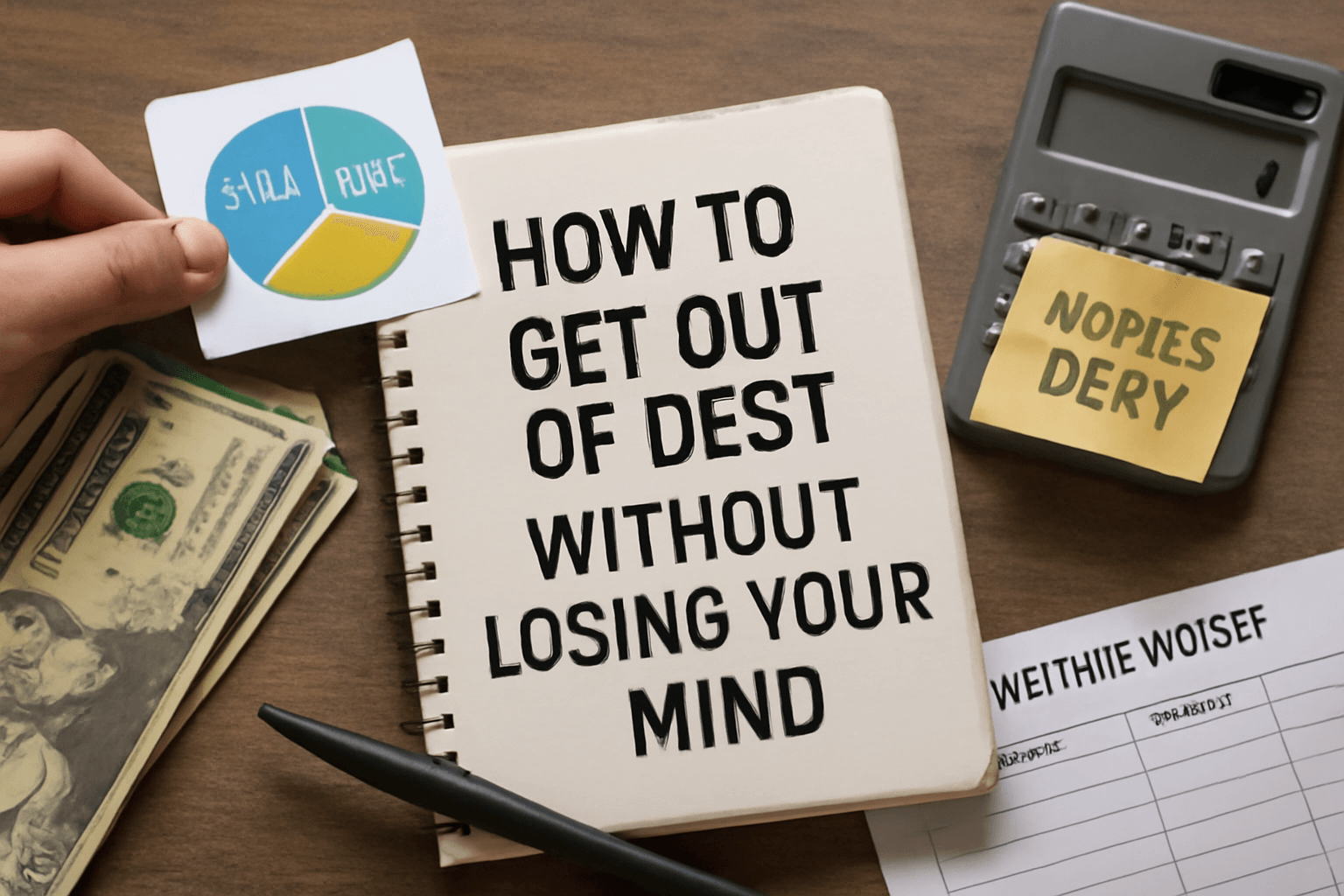Debt can feel like a heavy weight dragging you down. Whether it’s credit cards, personal loans, or student loans, being in debt is stressful, overwhelming, and often confusing. But here’s the good news: you can get out of debt, and you don’t have to sacrifice your mental health to do it.
This guide will walk you through practical, realistic steps to get out of debt while staying calm and focused because your financial well-being and mental well-being go hand in hand.
Step 1: Get Clear on What You Owe
The first step to tackling debt is understanding exactly what you’re dealing with. You can’t fix what you don’t measure.
Create a Debt Inventory
List every debt you have, including:
- Creditor name (e.g., Chase, Navient)
- Total balance owed
- Interest rate (APR)
- Minimum monthly payment
- Due date
Use a spreadsheet or a debt tracker app to stay organized. Seeing the total may be scary at first but clarity brings control.
Step 2: Stop Accumulating More Debt
It might seem obvious, but many people try to pay off debt while still using credit cards or taking new loans. This slows down progress and leads to more stress.
Tips to Stop the Bleeding
- Freeze your cards—literally, in a block of ice
- Remove saved card info from online shopping sites
- Avoid “Buy Now, Pay Later” services unless absolutely necessary
- Use cash or a debit card for purchases
Cutting off the source stops debt from growing while you work on paying it off.
Step 3: Choose a Debt Repayment Strategy
There’s no one-size-fits-all. Pick the method that fits your personality and motivates you to stay consistent.
The Debt Snowball Method
- Pay off the smallest balance first
- Once paid, roll that payment into the next smallest
- Offers quick wins and momentum
The Debt Avalanche Method
- Pay off the highest interest rate first
- Saves the most money in the long term
- Requires more discipline but leads to faster payoff overall
Tip:
If motivation is your biggest challenge, start with snowball. If saving money is the goal, go with avalanche.
Step 4: Build a Bare-Minimum Budget
Your goal is to free up as much cash as possible to throw at your debt. Start with a simple, bare-bones budget.
Include Only:
- Rent/mortgage
- Utilities
- Groceries
- Transportation
- Insurance
- Minimum debt payments
Cut or reduce:
- Dining out
- Subscriptions
- Entertainment
- Shopping
This isn’t forever—it’s a short-term sacrifice for long-term peace.
Step 5: Increase Your Income (Even Temporarily)
More income = faster debt payoff. Look for ways to add extra money, even if it’s just for a few months.
Side Hustle Ideas
- Freelancing (writing, design, etc.)
- Driving for Uber or DoorDash
- Selling unused items online
- Tutoring or babysitting
- Pet sitting or dog walking
Every extra $50 or $100 helps crush your balance faster.
Step 6: Negotiate with Creditors
You may be surprised many lenders are open to working with you, especially if you’ve had a hardship or a strong payment history.
What to Ask For
- Lower interest rates
- Waived fees
- Payment plans or deferments
- Settlements for less than you owe (only as a last resort)
Call and be polite but firm. Document everything.
Step 7: Use Windfalls Strategically
Tax refunds, bonuses, or gifts shouldn’t be spent without a plan.
Smart Uses of Windfalls
- Make an extra payment on your highest-priority debt
- Start or grow your emergency fund
- Pay off a small loan entirely
Celebrate small wins, but avoid the temptation to splurge when you’re making progress.
Step 8: Avoid Debt Traps
Some options might seem helpful, but they often lead to more problems.
Be Wary Of:
- Payday loans
- High-interest “quick fix” loans
- Cash advances from credit cards
- Transferring balances without understanding the fees
Always read the fine print and avoid anything that seems too good to be true.
Step 9: Take Care of Your Mental Health
Debt stress is real. It can affect your sleep, relationships, and self-esteem.
Coping Strategies
- Talk about it with someone you trust
- Practice mindfulness or journaling to process emotions
- Get professional help if debt anxiety becomes unmanageable
- Celebrate milestones—no matter how small
You are not your debt. It’s a temporary situation, not your identity.
Step 10: Stay Consistent and Forgive Mistakes
You’ll hit bumps in the road. You might overspend, miss a payment, or feel discouraged. Don’t give up.
Tips to Stay the Course
- Review your budget weekly
- Track your progress visually (charts, apps, or notes)
- Revisit your “why” regularly
- Join online debt-free communities for support
Progress isn’t always linear—but it’s always worth it.
Final Thoughts: You Can Do This One Step at a Time
Getting out of debt won’t happen overnight. But with consistent effort, smart strategies, and the right mindset, it absolutely will happen.
Focus on progress, not perfection. Celebrate your discipline. And remind yourself often: freedom is on the other side of this journey.
You’re not stuck. You’re in motion—and every payment is one step closer to financial peace.
